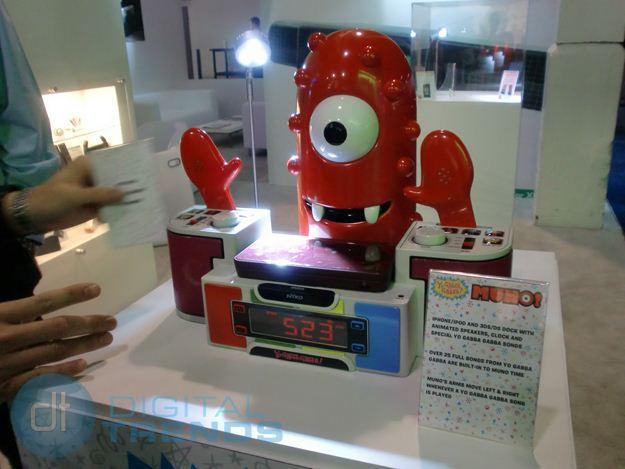
This week at CES, Nyko announced a handful of new product lines for the PlayStation Vita, the Kindle Fire, and two new products using the Yo Gabba Gabba license. The Vita accessories will most appeal to gamers, the Fire accessories could have the widest appeal, while the Yo Gabba Gabba are potentially the most important for the company.
The Vita accessories will be out around the time of the Vita itself (February 22), and include a power kit that includes an extra power cord as well as a car charger and USB cable, a speaker stand that docks the Vita and offers stereo sound and comes with a remote control, and a hard case called the Power Armor kit that will protect the portable system. While all the products look interesting, the case is a must-have for people that are planning on travelling with their Vitas often. It is still a prototype though, so the look will likely change, at least a bit. There is also a power grip in the pipeline, similar to the power grip available for the Nintendo 3DS. Along with a ergonomically designed rubber grips, the device will provide a souped up battery that promises three times as much life as the battery included with the Vita.

And finally Nyko also introduced the Yo Gabba Gabba Muno Time clock and docking station, a device with built-in speakers, several songs from the Yo Gabba Gabba! kids TV show that airs on Nick Jr., and an adapter to charge most portable devices. It also moves and becomes animated, which kids will either love to death or be terrified by. The license is incredibly hot right now, so odds are they will love it. Nyko also introduced a Yo Gabba Gabba hip pack for portable devices that features two pouches: one for your portable devices, and a separate pouch for things like keys that could scratch the devices. No price or release date has been given yet, other than summer 2012.
For many of us the name Yo Gabba Gabba! may not mean much, but for some it is the coolest thing on the face of the Earth, rivaled only by ice cream and puppies. The license for the popular Nick Jr. show is a hot one right now, and Nyko is making the most out of it.
Nyko also announced that the Intercooler Stealth fan for the Xbox 360 would be receiving a facelift. The redesigned unit will run you $19.99 and be available in Spring.


